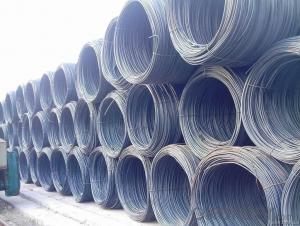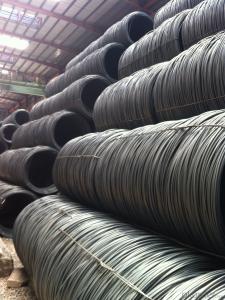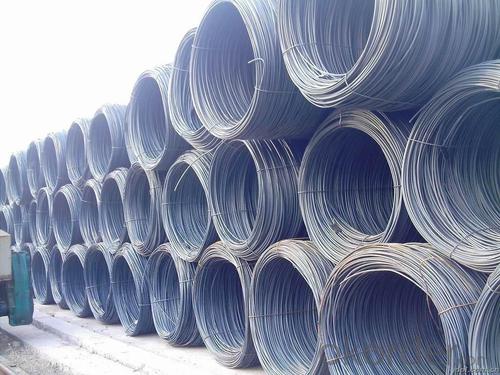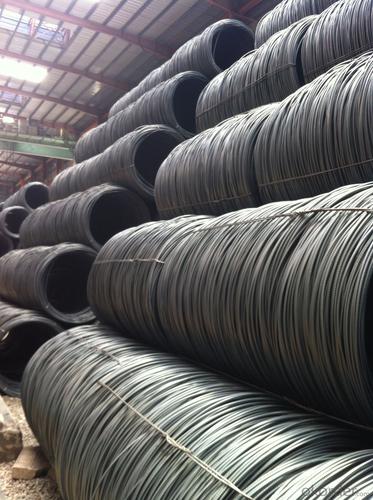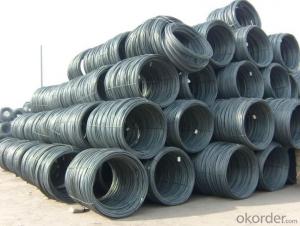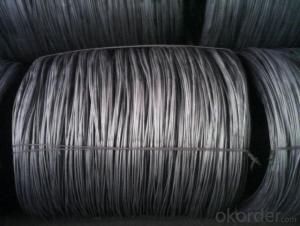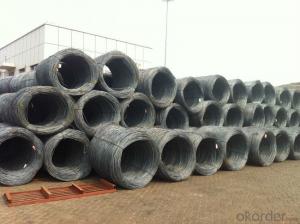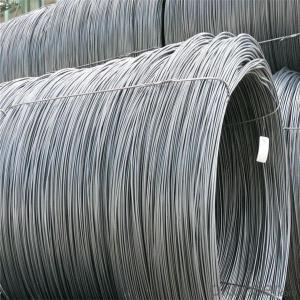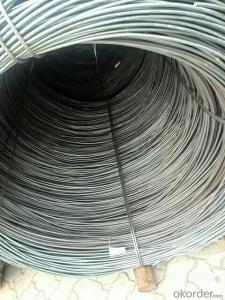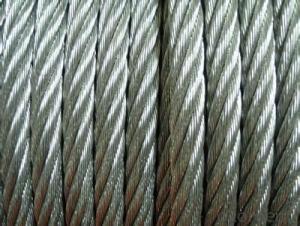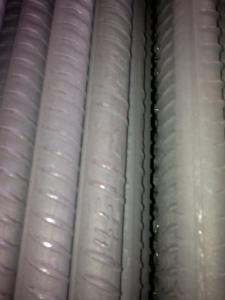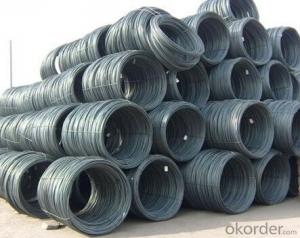Steel Wire Rods in SAE1006-SAE1018 with High Quality
- Loading Port:
- Tianjin
- Payment Terms:
- TT OR LC
- Min Order Qty:
- 25 m.t
- Supply Capability:
- 10000 m.t/month
OKorder Service Pledge
OKorder Financial Service
You Might Also Like
OKorder is offering wire rods at great prices with worldwide shipping. Our supplier is a world-class manufacturer of steel, with our products utilized the world over. OKorder annually supplies products to European, North American and Asian markets. We provide quotations within 24 hours of receiving an inquiry and guarantee competitive prices.
Product Applications:
After hot-rolled the products shaped into coil and delivery as finished product, including round, square,rectangular, hexagonal and so on. Since most of the products are round, it is generally called wire rod. Carbon steel wire rod is widely used in construction and manufacturing. Carbon steel wire rod is mainly used for reinforcement of reinforced concrete and welded structure or reprocessed (roberts , nail, etc.) materials, especially used to produce wire drawing, welding electrode, nails, spring, electronic, precise machinery parts and so on.
Product Advantages:
OKorder's Wire rods are durable, strong, and resist corrosion.
Main Product Features:
· Premium quality
· Prompt delivery & seaworthy packing (30 days after receiving deposit)
· Corrosion resistance
· Can be recycled and reused
· Mill test certification
· Professional Service
· Competitive pricing
Product Specifications:
Manufacture: Hot rolled
Grade: SAE1006-SAE1018
Certificates: ISO, SGS, BV, CIQ
Packaging: Export packing, nude packing, in coils
Grade | Chemical Composition (%) | |||||
C | Mn | S | P | Si | B | |
SAE1008B | 0.10max | 0.32max | 0.045max | 0.040max | 0.30max | 0.0008min |
Mechanical properties | ||||||
Yield strength(N/mm2) | Tensile strength(N/mm2) | Elongation (%) | ||||
≥195 | 350-380 | ≥32 | ||||
FAQ:
Q1: How soon can we receive the product after purchase?
A1: Within three days of placing an order, we will begin production. The specific shipping date is dependent upon international and government factors, but is typically 7 to 10 workdays.
Q2: How do we guarantee the quality of our products?
A2: We have established an advanced quality management system which conducts strict quality tests at every step, from raw materials to the final product. At the same time, we provide extensive follow-up service assurances as required.
Q3: The products are invoicing on theoritical weight or on actual weight?
A3: Usually, on actual weight.
Images:
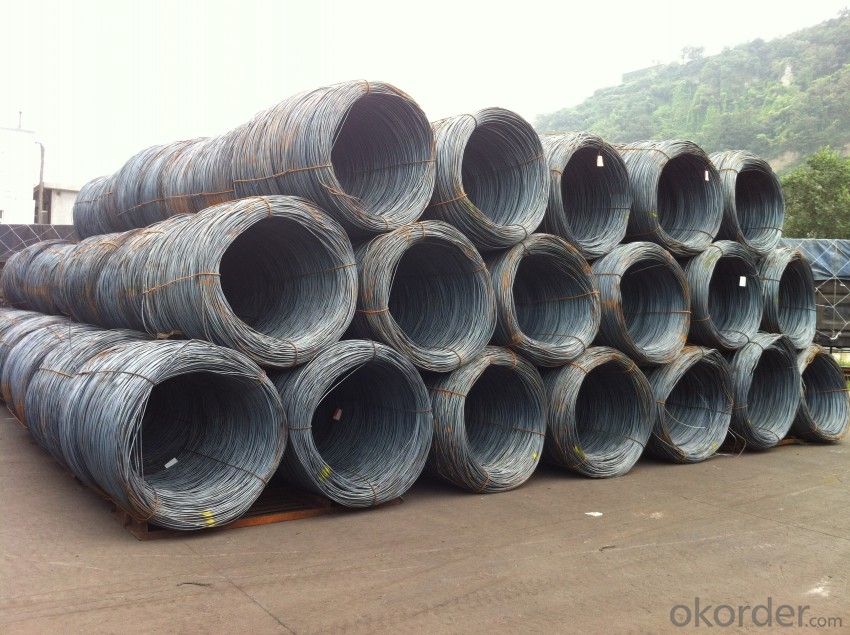
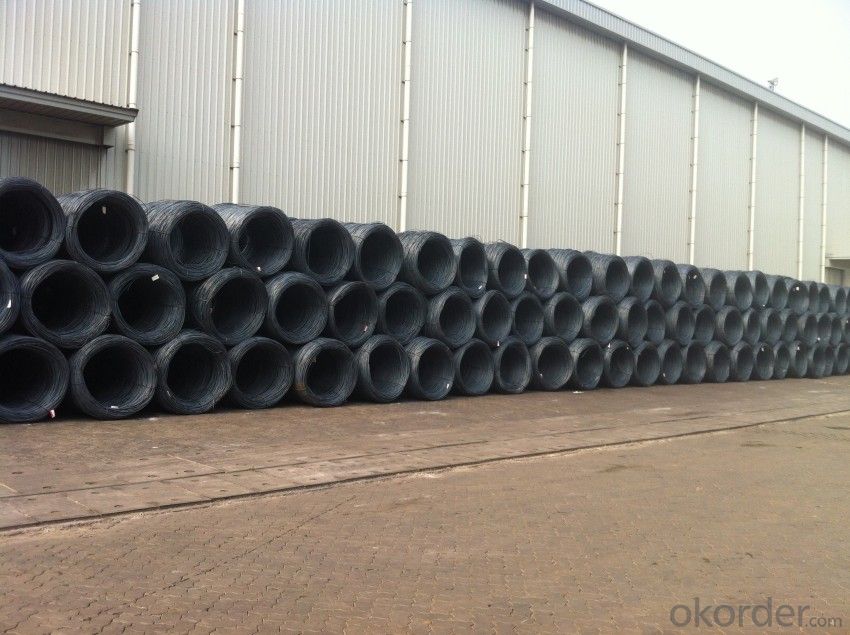
- Q: How is steel wire rod used in the manufacturing of wire mesh screens?
- Steel wire rod is used in the manufacturing of wire mesh screens by being drawn through a series of dies to reduce its diameter and increase its length. This process, known as wire drawing, results in a thin and strong wire that is then woven or welded together to create the mesh pattern. The steel wire rod provides the necessary strength and durability to the wire mesh screens, making them suitable for various applications such as filtration, separation, and protection.
- Q: What are the standard lengths available for steel wire rod?
- The standard lengths available for steel wire rod typically range from 2,000 to 2,500 meters.
- Q: How is steel wire rod used in the production of suspension springs for aircraft?
- Steel wire rod is commonly used in the production of suspension springs for aircraft due to its high strength and durability. The wire rod is first drawn to the desired diameter and then coiled to form the spring. The coiled wire rod is then heat-treated to improve its mechanical properties, such as resilience and fatigue resistance. These suspension springs play a vital role in absorbing shocks and vibrations during flight, ensuring a smooth and stable ride for the aircraft.
- Q: How is the formability of steel wire rod assessed?
- The formability of steel wire rod is typically assessed through various tests and evaluations that measure its ability to be shaped or formed without breaking or cracking. These assessments may include bend tests, tensile tests, torsion tests, and other mechanical evaluations to determine the material's ability to withstand deformation and maintain its structural integrity.
- Q: What are the common industry advancements for steel wire rod?
- Some common industry advancements for steel wire rod include the development of higher strength grades, improved surface quality and cleanliness, enhanced mechanical properties, and the implementation of advanced manufacturing processes such as continuous casting and hot rolling. Additionally, there have been advancements in the use of alloys and coatings to enhance the corrosion resistance and durability of steel wire rod in various applications.
- Q: How is steel wire rod used in the production of wire shelving?
- Steel wire rod is used in the production of wire shelving as the primary material for creating the wire shelves. The wire rod is first drawn and formed into the desired shape and size, then welded or connected to the shelving frame to create the wire grid structure. This ensures durability, strength, and stability, allowing the wire shelving to hold and organize various items effectively.
- Q: What are the different types of steel wire rod surface defect repair and rework procedures?
- There are several types of steel wire rod surface defect repair and rework procedures, depending on the specific defect and its severity. Some common procedures include grinding, polishing, and buffing to remove minor surface imperfections such as scratches or roughness. For more significant defects like cracks or dents, welding or brazing may be used to repair the damaged area. In some cases, the wire rod may need to undergo a complete rework process, involving cutting and reshaping the affected section, followed by heat treatment to restore its mechanical properties. Overall, the type of repair procedure used depends on the nature of the defect and the desired quality of the final product.
- Q: What are the different types of steel wire rod rolling mills?
- There are several different types of steel wire rod rolling mills that are used in the steel manufacturing industry. These mills are designed to produce wire rods with specific dimensions and characteristics, depending on the requirements of the end-use applications. Some of the common types of steel wire rod rolling mills include: 1. Two-high rolling mills: These mills have two rolls that are used to reduce the thickness of the wire rod. The rolls rotate in opposite directions, pulling the wire rod through the mill and reducing its diameter in the process. Two-high rolling mills are typically used for roughing and intermediate rolling stages. 2. Three-high rolling mills: These mills have three rolls, with one roll placed on top of the other two. The wire rod passes through the gap between the rolls and is reduced in thickness and diameter. Three-high rolling mills are often used for finishing and precision rolling stages. 3. Four-high rolling mills: These mills have four rolls, with two rolls placed on top of the other two. The wire rod passes through the gap between the rolls in a zigzag pattern, allowing for higher reduction ratios and improved dimensional accuracy. Four-high rolling mills are commonly used for high-speed rolling operations. 4. Tandem rolling mills: These mills consist of a series of rolling stands arranged in tandem, with each stand performing a specific reduction operation. The wire rod passes through each stand sequentially, undergoing multiple reductions to achieve the desired dimensions and surface finish. Tandem rolling mills are used for high-volume production of wire rods. 5. Continuous rolling mills: These mills are designed for continuous operation, with the wire rod being continuously fed into the mill and the finished product being continuously discharged. Continuous rolling mills are highly efficient and are used for high-speed production of wire rods. In addition to these types, there are also specialized rolling mills that are designed for specific applications, such as planetary rolling mills, which are used for rolling thin-walled wire rods, and reversible rolling mills, which can change the direction of rolling to achieve different properties in the wire rod. The choice of the appropriate type of rolling mill depends on factors such as the desired dimensions, surface finish, and mechanical properties of the wire rod.
- Q: What are the common applications of pre-stressed and oil tempered steel wire rod?
- Pre-stressed steel wire rod is commonly used in construction and engineering applications, such as for pre-tensioning or post-tensioning of concrete structures, bridges, and high-rise buildings. It helps to improve the load-bearing capacity, durability, and overall structural integrity of these projects. On the other hand, oil tempered steel wire rod is frequently utilized in the manufacturing of springs, suspension systems, and other high-stress applications. Its unique properties, obtained through the tempering process, provide excellent resistance to fatigue and ensure reliable performance in demanding industries such as automotive, aerospace, and machinery.
- Q: How is steel wire rod used in the manufacturing of fishing hooks?
- Steel wire rod is used in the manufacturing of fishing hooks as it provides the necessary strength and durability required to catch and hold fish. The wire rod is shaped, bent, and sharpened to form the hook, ensuring it can withstand the force and pressure exerted by fish. Additionally, the steel wire rod is often coated or plated to enhance its corrosion resistance, extending the lifespan of the fishing hook.
Send your message to us
Steel Wire Rods in SAE1006-SAE1018 with High Quality
- Loading Port:
- Tianjin
- Payment Terms:
- TT OR LC
- Min Order Qty:
- 25 m.t
- Supply Capability:
- 10000 m.t/month
OKorder Service Pledge
OKorder Financial Service
Similar products
Hot products
Hot Searches
Related keywords
